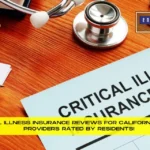Introduction
Navigating the maze of health insurance can be daunting, especially when you’re on a tight budget. But fear not! Uncovering the cheapest health insurance plans without sacrificing quality coverage is entirely possible. In a world where medical expenses can skyrocket unexpectedly, finding a plan that fits your financial framework is more crucial than ever. Whether you’re a freelancer, part-time worker, or someone simply looking for a budget-friendly option, this guide will walk you through the 6 cheapest health insurance plans to ensure you’re getting the best deal for your dollar. Get ready to dive deep into the world of affordable healthcare, where protecting your health and your wallet goes hand in hand.
Table of Contents
1. High-Deductible Health Plans (HDHPs)
High-Deductible Health Plans (HDHPs) are often at the top of the list for those seeking affordability. With higher deductibles, your monthly premiums are significantly lower. But here’s the kicker: they make you eligible for a Health Savings Account (HSA), where you can save pre-tax dollars for medical expenses. Think of it as a two-for-one deal, where you’re not just saving on premiums but also gaining a tax advantage. Ideal for those in good health and with a safety net for the higher upfront costs, HDHPs could be your budget’s new best friend.
2. Health Maintenance Organizations (HMOs)
Health Maintenance Organizations (HMOs) streamline your healthcare by limiting coverage to care from doctors who work for or contract with the HMO. It might sound restrictive, but here’s the silver lining: it keeps costs down. With lower premiums and out-of-pocket expenses, HMOs are perfect for those who value simplicity and affordability. Plus, the emphasis on preventive care can help keep future healthcare costs in check. If you’re someone who prefers a straightforward approach to healthcare and doesn’t mind the network limitations, HMOs could be a game-changer for your budget.
- For Expert Financial Insights And Guidance, You Can Visit Our Sister Site – ArabsGeek.com Now!
- Curiosity Piqued? Dive Into the Most Captivating Financial Content by Visiting Our Homepage!
- Unlock Exclusive Business Opportunities! 🚀 Connect with Us Now at our Email: [email protected]!
3. Exclusive Provider Organizations (EPOs)
Exclusive Provider Organizations (EPOs) strike a balance between HMOs and PPOs by offering moderate premiums and the flexibility to see specialists without a referral. While you’re required to stay within the network, the network is often extensive. This plan is a match made in heaven for those who desire the freedom to choose their doctors without breaking the bank. EPOs are particularly appealing if you want a blend of affordability and autonomy in your healthcare decisions.
4. Catastrophic Health Insurance Plans
Catastrophic health insurance plans are designed for the “just in case” scenarios, primarily targeting those under 30 or with a hardship exemption. With very low premiums, these plans cover three primary care visits per year and preventive services at no cost. The deductible is high, but once met, your insurance picks up the tab for essential health benefits. It’s an economical safety net for the healthy and young, providing peace of mind without a hefty price tag.
5. Short-Term Health Insurance Plans
Short-term health insurance plans are the wild cards of health insurance. They offer low premiums and flexible terms (ranging from a month to a year), making them perfect for those in transition—think between jobs, waiting for benefits to kick in, or recent college graduates. While coverage is more limited and doesn’t cover pre-existing conditions, these plans can be a temporary solution to keep you covered without denting your wallet.
6. Medicaid
Last but certainly not least, Medicaid offers comprehensive health coverage at little to no cost for eligible individuals and families with limited income and resources. It’s a lifeline for millions of Americans, providing access to essential healthcare services. If you think you might qualify, exploring Medicaid is a must. It’s possibly the most affordable plan you can find, with coverage that rivals even the most expensive private plans.
Conclusion | Cheapest Health Insurance Plans
Choosing the right health insurance doesn’t have to mean choosing between your health and your finances. With options ranging from HDHPs to Medicaid, there’s a spectrum of cheapest health insurance plans designed to fit diverse needs and budgets. Remember, the best deal isn’t just about the lowest price—it’s about finding the value that matches your healthcare needs without compromising your financial health. As you consider your options, think about your current health status, medical needs, and financial situation. Armed with information and a clear understanding of your priorities, you’re well on your way to securing health insurance that’s both affordable and adequate.
Frequently Asked Questions
1. Can I switch health insurance plans if I find a cheaper option later?
Yes, you can switch health insurance plans during the open enrollment period each year or if you have a qualifying life event that triggers a special enrollment period.
2. Are there any additional costs I should be aware of with these plans?
Yes, besides premiums, be mindful of deductibles, copayments, and coinsurance. These out-of-pocket costs can vary significantly between plans and affect the overall affordability.
3. How do I know if I qualify for Medicaid?
Eligibility for Medicaid depends on your income, family size, and state. Check with your state’s Medicaid program to see if you meet the criteria.
4. What’s the catch with short-term health insurance plans?
The catch is that they offer limited coverage and don’t cover pre-existing conditions. They’re best for temporary coverage gaps.
5. How can I save more on my health insurance costs?
Consider contributing to an HSA if you’re eligible, shop around during open enrollment, and always use in-network providers to lower your costs.











